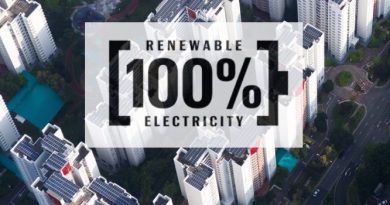Subsidies could be needed to make India greener, faster. CEEW report

According to a recent report released by the Council of Energy, Environment and Water, it was estimated that with rising incomes in India, the per capita household consumption of electricity will rise four times in rural and five times in urban households. Thus demanding a need to switch from coal to Alternate energy sources. The ‘Sustainable Development, Uncertainties, and India’s Climate policy’ report noted the urgent need for a countrywide study on the cost of integrating Alternative Renewable Energy into the country’s energy mix by 2050.
The report was generated to understand the uncertainties that could arise in the Nationally Determined Commitments (NDCs) made in the 2015 Paris Agreement on combating climate change as India pushes on for renewable energy. India’s stated NDCs were – 40% of total electricity generation to be sourced from non-fossil fuel based sources by 2030.
The report using presently available data and systematic model predictions show that India will more than likely exceed its NDC targets. It was estimated that alternate fuels would make up nearly 48% of electricity generated by 2030 and 59% by 2050, after the producers and/or generators pay the integration costs. However, if the integration costs are not imposed on the producers and instead provided with budgetary support, the rate of increase of alternate/renewable energy will be much faster. Going up to 58% of total electricity generated by 2030 and 74% by 2050.
These targets would be met by the long-term goals set by the government like the large-scale investment in the natural gas sector. Setting the target of 15% of total energy generation to come from this single sector by 2022. (more on this)
Solar energy setups demand large chunks of land for instalment and application, and one of the most persistent challenges faced by the renewable sector in India is land acquisition. With due considerations for welfare and rehabilitation of local population and the expected rise (20%) in India’s population by 2050. These issues will exist and need manoeuvring around to achieve a set target of goals. Floating solar farms are the new trend as they avoid all the land acquisition hassles and also show stronger numbers and efficiency than land-mounted solar farms.
The shift from coal to alternate/renewable energy would also result in loss of millions of jobs in the non-renewable sector, and would not easily find a way into jobs created by the renewable sector due to a lack of knowledge and necessary skill set of the new field. These can only be mitigated if the policymakers account for the foreseeable change in the status-quo and accommodate for it.
The report calls for fossil-fuels to bear the cost of the subsidies that were to be introduced in the renewable sector. Between 2010-11 and 2016-17, India collected a coal cess of Rs. 56,000 crore and the expected amount that will be collected in the next 12 years will provide significant financial support to subsidise renewable energy integration cost. The report found the total subsidy outlay on 2015 prices to be Rs 215,000 crores between 2015 and 2030 if solar energy infrastructure implementations were provided budgetary support. While the actual subsidies received by companies between 2013-14 and 15-16 was Rs 36,758-55,283 crore.
The report demands India to prepare for the transition to renewable energy, as it looks to adhere to the aim of the Paris Agreement of halting the rise in global temperature to 2 degree Celsius increase limit. However, to cut down on its emissions to achieve that target, India would have to generate all (98%) of its electricity from renewable non-fossil fuel sources.
![]()




